Up and down the Kennebec Valley: Streams of northern Winslow
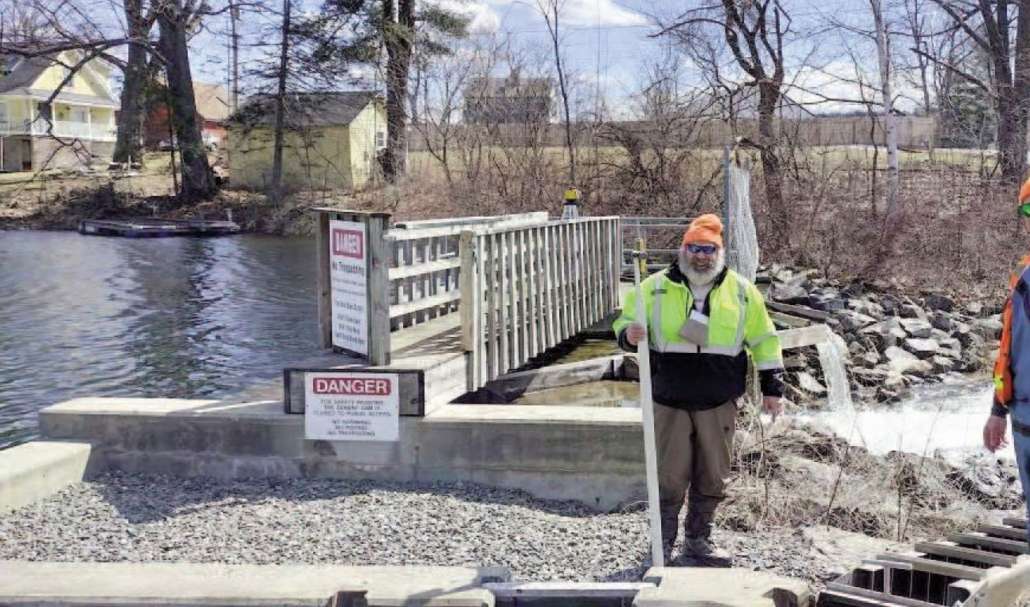
Vassalboro resident Nate Gray, of the Maine Department of Marine Resources, at the Webber Pond Dam, the beginning of Seven Mile Stream. (The Town Line file photo)
by Mary Grow
And Seven Mile Stream
As promised last year, this article finishes the story of mills and dams in 19th-century Winslow, or as much of the story as your writer has found, before moving south to Vassalboro’s Seven Mile Stream.
The previous account left off before describing the Pattee Pond outlet stream in Winslow, which runs north from the pond to join the Sebasticook River. A short distance after the stream leaves the pond, Wilson Brook (Wilson Stream to Henry Kingsbury, in his Kennebec County history) crosses under Albion Road to join from the east.
On Wilson Stream, Kingsbury wrote, “three miles from the river,” Ezra Crosby built a sawmill in 1807. He sold it to Ephraim Wilson, who 30 years later sold it to Amos Foss. The 1856 Kennebec County map shows a sawmill on Wilson Brook and three Wilson houses in the area, but no Foss property.
Where Pattee Stream joins the Sebasticook, Kingsbury described a series of mills over more than a century. Stephen Crosby started in 1780 with a sawmill and a grist mill, “worn out before 1830.” Joel Larned ran a successor sawmill for 25 years.
Zimri Haywood’s plaster mill ran from about 1845, “grinding Nova Scotia stone brought up the river on the old fashioned long boats,” to about 1870. Abijah Crosby next built a shingle mill. Fred Lancaster and Charles Drake bought from Crosby “and put a circular saw in the mill, which is one of the few now [1892] running in town.”
Like many other area towns, Winslow had in 1892 a Bog Brook, which was probably the Pattee Pond outlet stream, or perhaps one of its tributaries. Bog Brook ran through Ebenezer Heald’s 300 acres, which Kingsbury said – probably incorrectly –were granted in 1790. Heald used Bog Brook water power to run a sawmill and a grist mill that “served their day and generation and peacefully passed away before 1810.”
Jefferson Hines built another grist mill on Heald’s site, and John Nelson added a shingle machine. Not far upstream, Asher Hines and Thomas Smiley had a double sawmill. That, too, wore out, and the mill their sons built to replace it was aging by 1832, when, Kingsbury wrote, a flood destroyed both these mill complexes.
Edwin Carey Whittemore’s history of Waterville includes excerpts from a report on the Plymouth Company’s grant to Heald (also called Ebenezer Hale), of Ipswich, New Hampshire.
This document says Heald’s 300-acre grant was approved April 16, 1767. It had the “usual conditions:” the grantee was to build a house and clear at least five acres for agriculture within in a year.
In addition, Heald was directed to build, on the brook that ran through his new property from “Petises [Pattee] Pond” to the Sebasticook (here is the evidence that Bog Brook was the pond’s outlet stream) “a good and sufficient saw mill” by Dec. 25, 1767; and within three years to add a grist mill on the same brook.
Each mill dam was to have a fishway. Fish were to be available free to the Plymouth Company and to local residents.
In October 1766, the Plymouth Company had given Timothy Heald (or Hale), of Ipswich, New Hampshire, four lots northwest of the Sebasticook and two lots on the south, “reserving all mill privileges.” In June 1767, they hired Timothy Heald to lay out 54 50-acre lots, all or most presumably in what is now Winslow.
July 7, 1768, they authorized Ezekiel Paty (Pattee) to “take up” two 50-acre lots; and further authorized him and Timothy Heald to manage the settlers’ affairs and to prevent trespasses.
* * * * * *
Returning to Vassalboro, the 1869 list of dams and dam sites first cited in the Nov. 30 article in this series says there were six in a mile and a half stretch on Webber Pond’s outlet stream. “These are now nearly all lying idle.” Two “drove paper mills, and one a sash and blind factory.”
The 1869 report did not enumerate these dams. Kingsbury did, and Alma Pierce Robbins talked about some of them in her Vassalboro history.
The outlet stream is called Seven Mile Stream or Seven Mile Brook. It winds from the southwest side of Webber Pond, where the outlet dam and boat ramp are located, to the Kennebec River, turning south and then north and joined by several tributaries.
The stream was “from the first a useful water power,” Kingsbury said. He and the 1904 Vassalboro Register (found on line) so often duplicate each other word for word that your writer does not presume to say who plagiarized whom or whether each plagiarized the same source; both cite an Oct. 20, 1766, petition to the “honorable Committee of the Kennebec Company in Boston.”
This petition, signed by 55 men, asked the company to build them a grist mill, or give them permission to build one, near the mouth of Seven Mile Brook, so they would not have to carry their grain to Cobboseecontee to be ground. The Register writer believed this mill was built, the earliest grist mill in Vassalboro.
Robbins quotes from a 1790 land transfer agreement with references to a mill (grist mill? — not specified), a dam, a sawmill and an iron works “that belong to the sawmill.”
Kingsbury wrote that James Bowdoin – not a signatory to the 1766 petition — “built a grist mill west of the road” (“the road” was probably Riverside Drive, now Route 201) before 1812, when he sold it to Joseph Stuart.
This mill was the biggest between Augusta and Waterville, Kingsbury said, with three runs of stones; it often operated “day and night.”
Subsequent owners were Thomas Carlton, Hiram Lovejoy and from 1827 Ephraim Jones – under his management, “wood carving was also done here.” (So wrote Kingsbury in 1892. The Register says “wood sawing.”)
After 1829, Abiel Fallonsbee (Kingsbury) or Fallowsbee (the Register) owned the mill for nine years. Then George W. Hall bought a quarter share and “Augusta parties” the rest, until Thaddeus Snell bought the whole.
“The stream now flows unhindered through its ruins,” Kingsbury concluded. “Down the stream was the old Sturgis grist mill, silent and dismantled long ago.”
Seven Mile Stream powered sawmills as well as grist mills. In 1799, Robbins said, Paul Brown built a sawmill at the mouth of the brook, to which his son William succeeded. She wrote that this mill became “Baker’s mill,” run by Eugene Baker in the 1800s.
Kingsbury was probably describing Baker’s mill when he listed a sawmill built on the site of the early mill at the mouth of Seven Mile Stream around 1871 by “A. S. Bigelow and others.” A. L. Baker took over in 1887, and in 1892 it was the only mill operating on the stream.
Area residents Ira Daggett Sturgis and Joseph Southwick were involved in lumbering in the upper Kennebec Valley and the lumber business in Vassalboro and Augusta. An on-line site calls Sturgis “a Vassalboro farmer turned lumber baron” and says in 1847 he and his half-brother, John, bought and started “manufacturing” in Southwick’s old sawmill on Seven Mile Brook.
The 1904 Register and Kingsbury listed a sawmill farther upstream that was started in or before the 1820s by Benjamin Brown, Captain William Farwell and John Howard (the Register) or John Homans (Kingsbury). Brothers James and George Robbins bought it in the late 1820s; James sold it in or soon after 1841. The 1830 John Gardner tannery was near this mill.
Still farther upstream, close to Webber Pond, was a sawmill run first by Coleman and later by Foster.
Seven Mill Brook powered two paper mills, Kingsbury said. George Cox and “Mr. Talpy” built one well downstream that burned in 1841; they then bought the Robbins sawmill and made it the second paper mill. George Tower and Daniel Stanwood ran it until about 1870, when it closed. Kingsbury said the ruins were visible in 1892.
After the 1841 fire, “Bridge and Sturgis” built on the paper mill site a “three-story machine shop.” Here “sash, blinds and doors were made for a time.” Charles Webber took it over (no date given), and in 1892 the building was standing, but Kingsbury said nothing about its being in use.
Generations of Timothy and Ebenezer Healds
There were, of course, generations of Timothy and Ebenezer Healds. Here are genealogical summaries from the on-line sites WikiTree and Find a Grave, complete with contradictions.
Timothy Heald #1 was born June 7, 1696, in Concord, Massachusetts, and died there March 28, 1736. He married Hannah Wobby in 1721. He was a blacksmith, who died young “from hot metal in his eye,” according to Find a Grave.
Timothy #1 and Hannah had either four or six sons and maybe one daughter. Their oldest son they named Timothy (#2).
WikiTree says their youngest son was Ebenezer #1, born in 1736 in Concord, after his father’s death. Find a Grave lists four sons (no daughters) born to Timothy #1 and Hannah between 1723 and 1732. None is named Ebenezer.
Find a Grave says Ebenezer #1 was born June 26, 1767, in New Ipswich, New Hampshire, son of Timothy #2. WikiTree has no Ebenezer among Timothy #2 and Elizabeth’s children. Yet another source, time.graphics, says explicitly Lieutenant Timothy, Jr., and Elizabeth did not have a son named Ebenezer.
WikiTree and Find a Grave both say Ebenezer #1 died in March 1818 in Winslow. He married Elizabeth Heywood (born May 20, 1764, died in 1816) on Oct. 15, 1782. The oldest of their six sons and two daughters was Ebenezer #2.
Timothy #2, known as Lieutenant Timothy Heald, was born was Oct. 14, 1723, in Concord, and died Aug. 18, 1785, in Winslow, Maine. He married Elizabeth Stevens in 1748.
Timothy #2 and Elizabeth had two sons and a daughter; they named their older son Timothy (#3; one source calls him Captain) and their younger son Josiah, according to WikiTree.
Timothy #3 (son of Timothy #2 and Elizabeth) was born May 24, 1749, in New Ipswich, New Hampshire, or May 20, 1749, in Townsend, Massachusetts. He died May 11 or May 17, 1817, in Winslow.
Timothy #3 married Abigail Cragin on Feb. 16, 1779, in Winslow. They named the first of their 17 children Timothy (#4; born in 1779 and died in 1810). Abigail died July 18, 1857, at the age of 95; husband and wife are buried in Winslow’s Fort Hill cemetery, according to Find a Grave.
WikiTree says Ebenezer #2 (Ebenezer #1 and Elizabeth [Heywood]’s oldest son), was born in Clinton Oct. 14, 1783, married Lucy Warren in Clinton on Oct. 3, 1806, and died Nov. 1, 1860, in Marshalltown, Iowa. Ebenezer #2 and Lucy named none of their six or seven sons either Timothy or Ebenezer.
Find a Grave says Lieutenant Timothy Heald (#2), born in 1723, came to Winslow and is buried in Fort Hill cemetery. Wikitree says the Ebenezer who was born in 1736 (Ebenezer #1, Lieutenant Timothy’s younger brother) was the one who came to Winslow in the mid-1760s.
Ebenezer in Winslow was a farmer, a lieutenant in the militia and holder of several positions in Clinton: first treasurer in 1795, the year the town was incorporated, and town clerk from 1809 to 1812 and in 1816.
This source says he is buried in the Barton Hinds cemetery, aka the Crosby Farm cemetery, on Eames Road in Winslow.
Main sources
Kingsbury, Henry D., ed., Illustrated History of Kennebec County Maine 1625-1892 (1892).
Robbins, Alma Pierce, History of Vassalborough Maine 1771 1971 n.d. (1971)
Whittemore, Rev. Edwin Carey, Centennial History of Waterville 1802-1902 (1902).
Websites, miscellaneous.
Responsible journalism is hard work!
It is also expensive!
If you enjoy reading The Town Line and the good news we bring you each week, would you consider a donation to help us continue the work we’re doing?
The Town Line is a 501(c)(3) nonprofit private foundation, and all donations are tax deductible under the Internal Revenue Service code.
To help, please visit our online donation page or mail a check payable to The Town Line, PO Box 89, South China, ME 04358. Your contribution is appreciated!


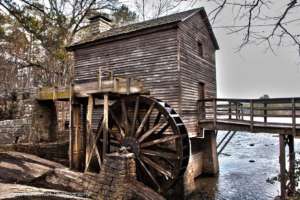
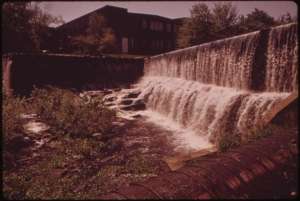
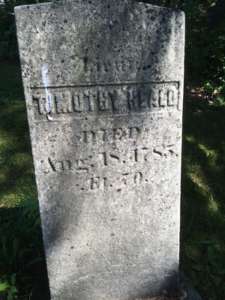
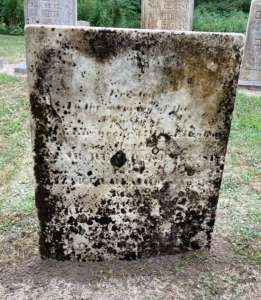



Leave a Reply
Want to join the discussion?Feel free to contribute!